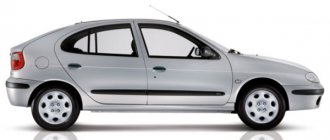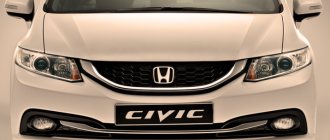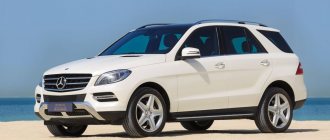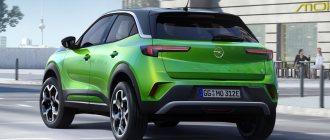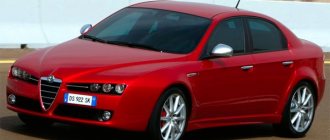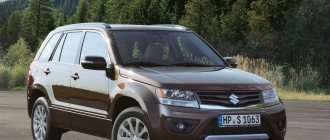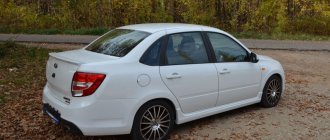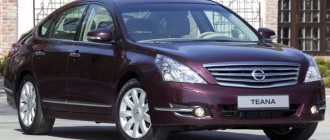Who should buy it?
The Renault Megane is well equipped and has plenty of safety kit. The updated hatchback looks stylish and will undoubtedly make you stand out in city traffic. Renault Megane is perfect for daily trips on the home-supermarket-work route, as well as small family trips.
90%
car owners will buy this car again!
- 90% Road tests
- 90% Reliability
- 90% Driver satisfaction
Alternative
Ford Focus is one of the most affordable alternatives. A five-door hatchback with a manual transmission and a 100-horsepower 1.6-liter engine costs from 570,000 rubles. With automatic transmission - from 613,000 rubles. A more powerful 115-horsepower car costs from 664,000 rubles. and from 682,000 – with automatic transmission. The cost of a well-equipped car exceeds 800,000 rubles.
Mazda 3 with a 105-horsepower engine and 5-speed. “mechanics” costs from 619,000 rubles, with “automatic” – from 685,000 rubles. The price of a car with a configuration close to the test Renault Megane is about 830,000 rubles.
Volkswagen Golf has never been known for its affordable prices, and sometimes they were simply anti-people. For a car with a 1.6 engine (102 hp) and a manual transmission they ask from 703,000 rubles. Two-pedal Golf costs from 816,000 rubles.
New or used car?
The fourth generation Renault Megane was introduced back in 2015 and immediately became a leader in its class due to its cost and quality. Since then there have been many cosmetic updates.
The 2021 restyling for Megane is a serious and noticeable event. The new range offers additional technology, including a new plug-in hybrid model, more driver assistance systems, premium looks and updated exterior design, including new headlights and taillights, as well as some welcome updates to the cabin.
It’s definitely worth buying the Renault Megane 2021 and getting an up-to-date hatchback.
Appearance
The Megane's design is as modern as it gets.
However, the automaker's designers played a little with the new version and redesigned the front bumper, deflectors and fenders. They did it subtly, but not so subtly that the differences couldn't be detected.
How we tested the Renault Megane 2021
Specifications
Renault Megane engines are represented by power units for every taste. There are three petrol engines: the 1.3 TCe, which comes in three power configurations (115, 140, 160 hp), the 1.0-litre, which produces 120 hp, and the 1.6-litre, which produces 202 hp. for those who are looking for more.
Diesel is still present in the Megane family. This is the Blue dCi with two power outputs: 95 and 115 hp.
From now on, the top-spec Megane RS will have the same engine as the RS Trophy. This is a 1.8 turbo that develops 300 hp. and 420 Nm of torque (with EDC gearbox).
The star of the range, however, is the new E-Tech plug-in hybrid. It will be launched first on the Megane estate and then on the hatchback. The hybrid powertrain combines a 1.6-liter 4-cylinder gasoline engine with a 9.8 kWh battery and two electric motors. Producing 160 hp, the PHEV can travel in all-electric mode for 50 km at speeds of up to 135 km/h.
Renault includes a wall box in the price of the electrified version. It charges a 3.6kW car in three hours - quite slow for a PHEV, most of which can use 7kW.
With the base petrol engine, the Renault Megane accelerates to 100 km/h in 9.4 seconds. To get such a figure you will have to use all the revolutions available to you. It's worth noting that this is not the smoothest or most pleasant-sounding powerplant.
Renault Megane with a “junior” gasoline engine has a fuel consumption of 5.3 l/100 km in the combined cycle.
The Renault Megane buyer has a choice of a six-speed manual transmission and a seven-speed “robot” with a dual clutch.
Renault only offers the Megane with front-wheel drive.
Concern for safety
{banner_content}Renault has been renowned for its care for many years. When developing the Renault Megane 2, the company did not deviate from its principles. The braking distance alone of 36 m (at a speed of 100 km/h) is worth the podium and general “respect”. And this bonus is complemented by six airbags, with the front ones in the adaptive version. The personal safety of the owners is also thoughtfully worked out:
- “Pathway to the house”: the headlights turn off with a delay sufficient to overcome the approach to the entrance;
- Central locking when the speed is reduced to 10 km/h;
- Limiting the remote operation of the key card to unlocking the trunk only. So while you are digging into it, no one will fit into the interior, and the child will not get out of it.
Renault has generally taken care of children from all sides: isofixes are even provided on the front passenger seat, so that you can secure a child seat (naturally, rearward facing) if there is no one in the car to look after it except the driver.

